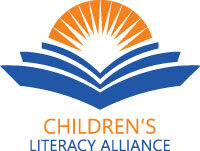What is the Illiteracy Cycle?
Low literacy skills are often passed from one generation to the next, within families, communities, or entire societies. This pattern is sometimes referred to as the illiteracy cycle.
Let’s look at how this works.
- This cycle begins with poor or inadequate education in a person’s childhood.
- That child grows up to become an adult with limited literacy.
- Adults with limited literacy skills often have trouble reading, writing, or working with educational materials.
- When these adults become parents, they struggle to support their children’s educations. Parents may have trouble reading to their children, teaching them early life skills, helping them with homework, or getting involved with their formal education and schooling.
- Children succeed best with literate and supportive adults in their environments. Even the most loving and caring parents have trouble helping their children succeed if they themselves were not given a proper education, through no fault of their own.
- Children can thus begin school at a disadvantage. They may struggle to develop reading and writing skills, leading to poor academic performance.
- Families who have become entrapped in the Illiteracy Cycle often face poverty, which can force children to leave school early, or apply themselves less diligently to their schoolwork, to work and contribute to household income.
- When there is poor access to quality schools, teachers, or learning materials, it further perpetuates the problem.
- As these children grow up with low literacy skills, they face limited job opportunities, lower income, and reduced ability to support their own children’s education. The next generation repeats the cycle.
How can we end this cycle?
The biggest continual problem is the lack of access to quality literacy programs and materials. Some cite poverty as a reason for illiteracy. It is true that it’s a factor, but income level is not an index of the ability to learn. If we cite poverty as a root cause, we must also clearly state that poverty is only one factor that influences the availability of quality education (due to available funds).
The solution lies in creating cost-effective literacy programs that make quality education available to the communities one seeks to improve.
If we want to break this cycle, there are two strategic targets to address:
- Parents and adults. By enabling parents and adults to help children with literacy at home, we create an environment where the adults around the children foster their learning.
- Children. By providing effective after-school and community programs, we can directly assist children in increasing their literacy skills.
Addressing only one of the problems is not enough. If we want to break the Illiteracy Cycle, we must tackle both.
This is what the Children’s Literacy Alliance stands for.
